We are now in Sitia, our last stop in Crete, before heading NE to Rhodes. Yesterday we took a bus ride back to Agios Nikolaos, a very pleasant town with a good marina (overwintering potential) and lots of restaurants. The mountain views on the switch-back road there were spectacular. The ride back in the dark was like a roller coaster as the driver was trying to make up time.
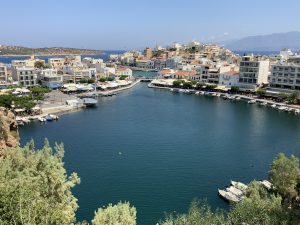
Crete is a very special place. The mountainous scenery, the history, the architecture, and the laid-back attitude were all very refreshing…. but of course that means there is also an incredible number of tourists. We have had too many good meals washed down with Raki, accompanied by dessert, that we need to go on a diet. Steve, at least is probably working off most of the excesses as he has already hiked the 16-kilometer Somaria Gorge that drops to sea level from 1230m and has now taken a couple of days off the boat to do some more hiking/climbing. We put his engineering and climbing skills to good use in Chania and again in Spinalongas when we hoisted him to the top of the mast to see how we can reduce/eliminate chafe on the mainsail halyard when sailing downwind.
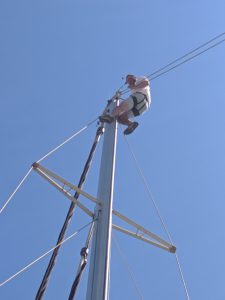
The marinas could use some marketing help, but they are very cheap and thankfully have had space available most of the time (though we would have preferred to be in the old port in Iraklion). As you can see from some of the photos many of the harbours have been in existence since Venetian times.
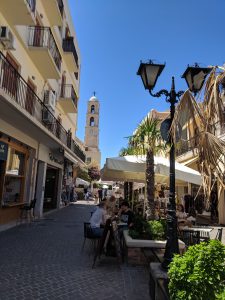
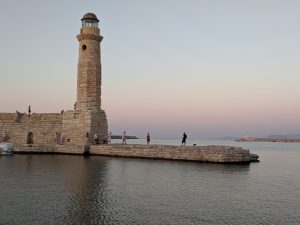
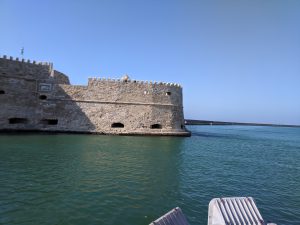
For us, the most significant learning from our visit to Crete is just how advanced the ancient civilizations were in this part of the world. A visit to the Minoan palace at Knosos followed by a visit to the Archeological Museum in Iraklion were the highlights of our Cretan adventure. Although the Minoans built the first palace at Knosos around 1900 BC, and replaced with a larger multi-story one in 1,700 BC, there is evidence of significant Neolithic settlements in the same location from 6700 to 3200 BC. The pottery at the top of this blog dates from this period, 4500 – 3000 BC. How the Minoans managed to survive and thrive in this relatively harsh environment, design and build palaces, create amazing, artistically decorated pottery, frescos and sculptures, and host ‘block parties’ where food and drink was provided to the locals from large metal cauldrons, almost 4,000 years ago is remarkable. They also built palaces at Zargos and Souda and traded in the Med and near east. Linear A, their script, has still not been deciphered. Linear B tablets found at Knosos dating from 1,500 BC has given us considerable information about Minoan culture. Linear B was developed by the Mycenaeans who came from the Greek mainland and occupied Knosos palace. The reasons for the decline of the Minoan empire are unclear, but like all empires they eventually fade away.
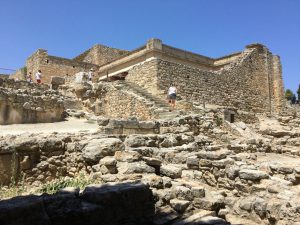
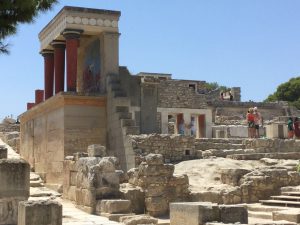
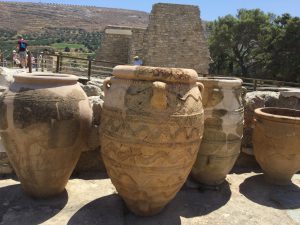
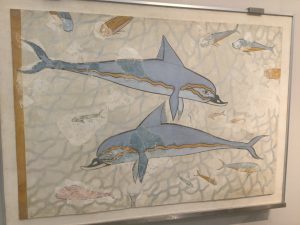
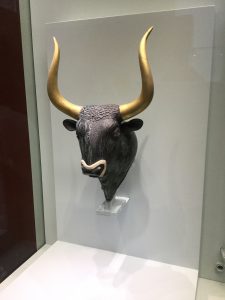
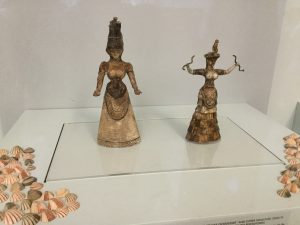
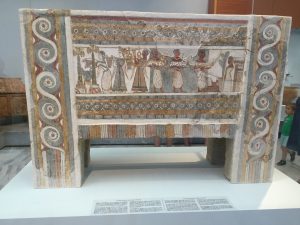
Our next stop was Spinalongas Lagoon, which had quite a different feel to it. We felt quite relaxed at anchor, despite the occasional downdraft gusts coming off the surrounding hills, so we ended up staying 3 nights. Not only did it give us a chance to pull out the scuba tank from the depths of our stern locker so that Howard could replace some anodes, amongst other boat maintenance tasks, but also to explore the small island of Spinalongas and relax at the many tavernas in Elounta. The fort on Spinalongas island was built by the Venetians between 1579 and 1586 but fell to the Turks in 1715, near the end of more than five centuries of Venetian rule in Crete. At the beginning of the 20th century, Spinalongas island became a leper colony with compulsory confinement of Cretans afflicted with the disease. The last leper left the island in 1957, following the development of medicines that successfully treated the disease.
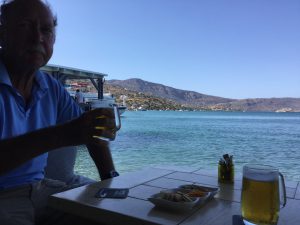
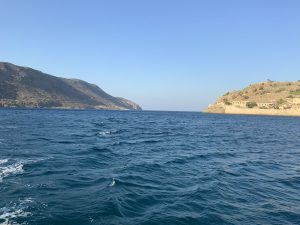
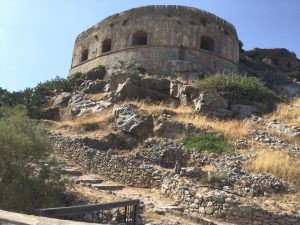
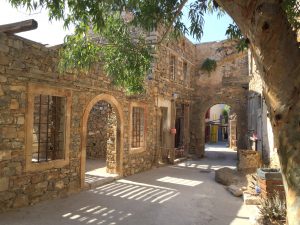
Now we are waiting for suitable weather to cross over to Rhodes. The Meltemi is blowing strongly as I write so even in harbour, we are being bounced around a bit. Hopefully it will diminish over the next couple of days so we can be on our way again. Today we did a bit of engine maintenance but hopefully tomorrow we will manage to explore a little more of this end of Crete, probably by bus.
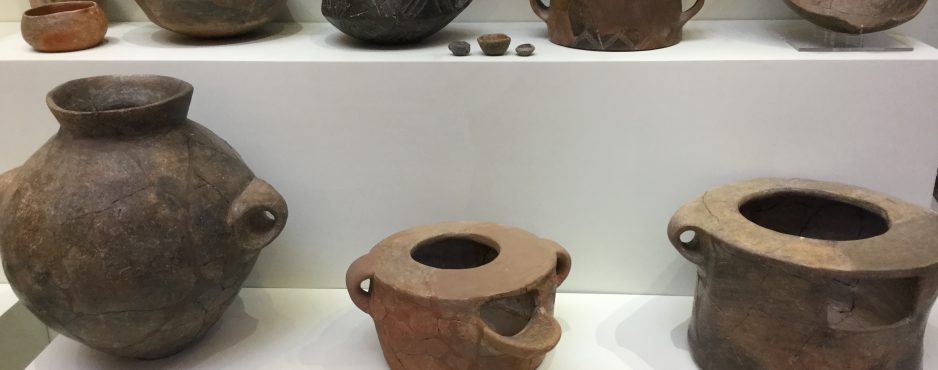
4 Comments
Jenny
Hi Hope and Howard ‘Enjoying your chronicals. It reminds me that there are still lots of places left to visit in the Med. Hopefully catch up with you somewhere soon. Fair winds in the meantime. Jennyxx
Cheryll
Reminded me of a week in Crete many years ago. It must be lovely by boat! So enjoying your adventures and the history lessons. Xx
Cliff
Hi Hope and Howard,
Thank you for sharing your adventures! They are informative, educational and inspiring!
Looking forward to more.
Cheers!
Cliff
Ruth and Nick Pearman
Fascinating stuff. And if you haven’t already found a copy of Victoria Hislop’s “The Island” based around Spinalonga and the former leper colony, then look out for it in the second hand book stalls as it will make a good read while you are waiting for the weather to be right for your next passage. That is, if there are no more pressing maintenance jobs to attend to! Rxx